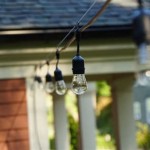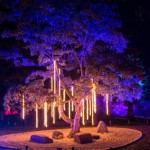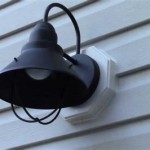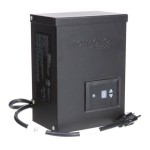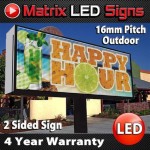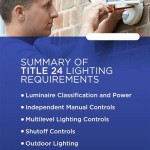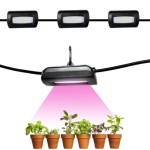Motion Sensor Lights: Optimizing Outdoor Security and Efficiency
Motion sensor lights installed outdoors offer a multifaceted approach to security and energy conservation. These lights activate upon detecting movement within a designated range, providing illumination when and where it’s needed. This functionality serves as a deterrent to potential intruders, enhances safety during nighttime activities, and minimizes unnecessary energy consumption. Understanding the various aspects of motion sensor lights, from their operational principles to installation considerations, is crucial for maximizing their benefits.
The core function of a motion sensor light revolves around its ability to detect changes in the environment. These changes are typically related to the presence of a moving object emitting heat, although various sensor technologies can be employed to detect different types of movement. Once motion is detected, the light fixture is triggered, providing immediate illumination. The duration of illumination is usually adjustable, allowing users to customize the lighting period to suit their specific needs. This feature is particularly useful in situations where brief lighting is sufficient, such as when retrieving mail or taking out the trash, conserving energy by preventing the light from remaining on for extended periods.
Motion sensor lights are available in a wide range of styles and configurations, designed to cater to diverse architectural aesthetics and security requirements. These lights can be integrated into various types of fixtures, including floodlights, spotlights, pathway lights, and wall sconces. The choice of fixture depends on the desired coverage area and the intensity of illumination required. Floodlights, for example, are suitable for illuminating large areas, such as driveways or backyards, while spotlights are better suited for highlighting specific features or areas of concern. Choosing the appropriate type of fixture is crucial for achieving the desired level of security and aesthetic appeal.
Understanding the Different Types of Motion Sensor Technology
Several types of motion sensor technologies are commonly used in outdoor lighting. Understanding the differences is crucial for selecting the most appropriate type for a specific application. The most prevalent types include Passive Infrared (PIR), Microwave, and Dual Technology sensors. Each type has its own strengths and weaknesses in terms of sensitivity, range, and susceptibility to environmental factors.
Passive Infrared (PIR) sensors detect changes in infrared radiation emitted by objects, specifically heat signatures. These sensors are relatively inexpensive and widely used in both residential and commercial settings. PIR sensors typically have a detection range of up to 70 feet, depending on the model and environmental conditions. However, PIR sensors can be susceptible to false triggers caused by sunlight, moving tree branches, or small animals. To mitigate these issues, it's important to carefully position the sensor away from potential sources of interference.
Microwave sensors, on the other hand, emit microwave radiation and detect changes in the reflected signal. These sensors are often more sensitive than PIR sensors and have a longer detection range. They are also less susceptible to false triggers caused by heat sources. However, microwave sensors can be more expensive than PIR sensors and may be affected by certain weather conditions, such as heavy rain or snow. They are also able to penetrate certain materials like wood or thin walls which may or may not be desirable depending on the application.
Dual Technology sensors combine PIR and microwave technology to reduce false triggers. These sensors require both PIR and microwave detection to trigger the light, making them more reliable than single-technology sensors. This combination enhances the accuracy of motion detection and reduces the likelihood of unwanted activation. Dual Technology sensors are generally more expensive but offer increased reliability and performance, making them a suitable choice for areas prone to false triggers.
Key Considerations for Choosing and Installing Motion Sensor Lights
Selecting and installing motion sensor lights requires careful consideration of several factors to ensure optimal performance and effectiveness. These factors include the desired detection range, the type of light fixture, the power source, the mounting location, and the adjustable settings. Each of these aspects plays a critical role in achieving the desired level of security and energy efficiency.
The desired detection range is a primary consideration. Determine the area that needs to be covered by the motion sensor. A larger area requires a sensor with a wider detection range. Consider the distance and angle at which motion needs to be detected to ensure adequate coverage. It's important to note that the advertised range might be affected by environmental factors, such as foliage or obstructions.
The type of light fixture should complement the desired aesthetic and provide adequate illumination. Consider the style of your home and choose fixtures that blend seamlessly with the existing architecture. The brightness of the light should be sufficient to deter intruders and provide adequate visibility. LED (Light Emitting Diode) fixtures are an excellent choice due to their energy efficiency, long lifespan, and bright illumination. Older halogen or incandescent bulbs are less efficient and require more frequent replacement.
The power source is another important consideration. Motion sensor lights can be hardwired or battery-operated. Hardwired lights provide a reliable power source and are suitable for permanent installations. Battery-operated lights offer greater flexibility in terms of placement but require periodic battery replacement. Solar-powered motion sensor lights are also available, which are environmentally friendly and require no wiring. However, their performance depends on the amount of sunlight they receive.
Mounting location is critical for effective motion detection. Position the sensor in a location where it has a clear view of the area to be monitored. Avoid placing the sensor behind obstacles or near sources of heat that could trigger false alarms. The height and angle of the sensor should be adjusted to optimize the detection range. Consult the manufacturer's instructions for recommended mounting heights and angles.
Adjustable settings allow for customization of the light's behavior. Most motion sensor lights offer adjustable settings for sensitivity, duration, and range. Adjusting the sensitivity allows you to fine-tune the sensor's responsiveness to motion. The duration setting determines how long the light remains on after motion is detected. The range setting allows you to limit the detection area to avoid triggering the light unnecessarily.
Optimizing Energy Efficiency and Extending Lifespan
Motion sensor lights are inherently energy-efficient due to their on-demand operation. However, further optimization can be achieved through careful selection of light bulbs and proper adjustment of settings. Employing energy-efficient LED bulbs and minimizing the duration of illumination can significantly reduce energy consumption and extend the lifespan of the light fixture.
Choosing LED bulbs is a crucial step in optimizing energy efficiency. LED bulbs consume significantly less energy than traditional incandescent or halogen bulbs, while providing comparable or even superior illumination. They also have a much longer lifespan, reducing the need for frequent replacements. Look for LED bulbs with a high lumen output and a low wattage rating to maximize energy savings. Also, ensure to select the appropriate color temperature for your needs, typically expressed in Kelvin (K). Warmer temperatures (around 2700K-3000K) are suitable for creating a cozy ambiance, while cooler temperatures (around 4000K-5000K) provide brighter and more focused illumination.
Adjusting the duration setting is another important aspect of optimizing energy efficiency. Set the duration to the minimum time necessary to provide adequate illumination. Longer duration settings consume more energy and can unnecessarily illuminate the area even after the motion has ceased. Experiment with different duration settings to find the optimal balance between illumination time and energy consumption.
Regular maintenance can also extend the lifespan of the motion sensor lights. Clean the sensor lens periodically to remove dust and debris that could interfere with motion detection. Check the wiring connections to ensure they are secure and free from corrosion. Replace any damaged components promptly to prevent further damage to the fixture. Proper maintenance ensures optimal performance and prolongs the lifespan of the motion sensor lights.
Consider the environment in which the sensor or light is operating. Ensure that it is properly rated for outdoor use, with appropriate weatherproof seals and construction. This measure will keep the electronics safe from moisture and dust which may degrade the lifespan of the product.
By carefully considering these factors and implementing these strategies, homeowners and businesses can maximize the benefits of motion sensor lights, enhancing security, conserving energy, and extending the lifespan of their lighting systems. The integration of motion sensor technology into outdoor lighting offers a practical and effective solution for a wide range of applications.

Understanding Motion Lighting

Motion Sensor Lights Tips To Reset Detector

How To Reset Outdoor Motion Sensor Lights Electronicshub

Lightdot Led Security Lights Motion Sensor Light Outdoor 38w 3800lm O

120 Led Solar Security Light Black Spv Lights

Tips For Setting Up Your Motion Sensor Floodlight

Understanding Motion Lighting

How To Choose The Best Led Motion Sensor Security Light

Home Zone Security Solar Led Motion Sensor Light Outdoor 6000k 950lm Weatherproof Flood For Garage Porch Yard No Wiring Com

Eti 240 Degree Led Motion Sensor Light Outdoor White 3 Head Flood Security 1800 To 3600 Lumens Driveway Walkway 514032120 The Home Depot
Related Posts
